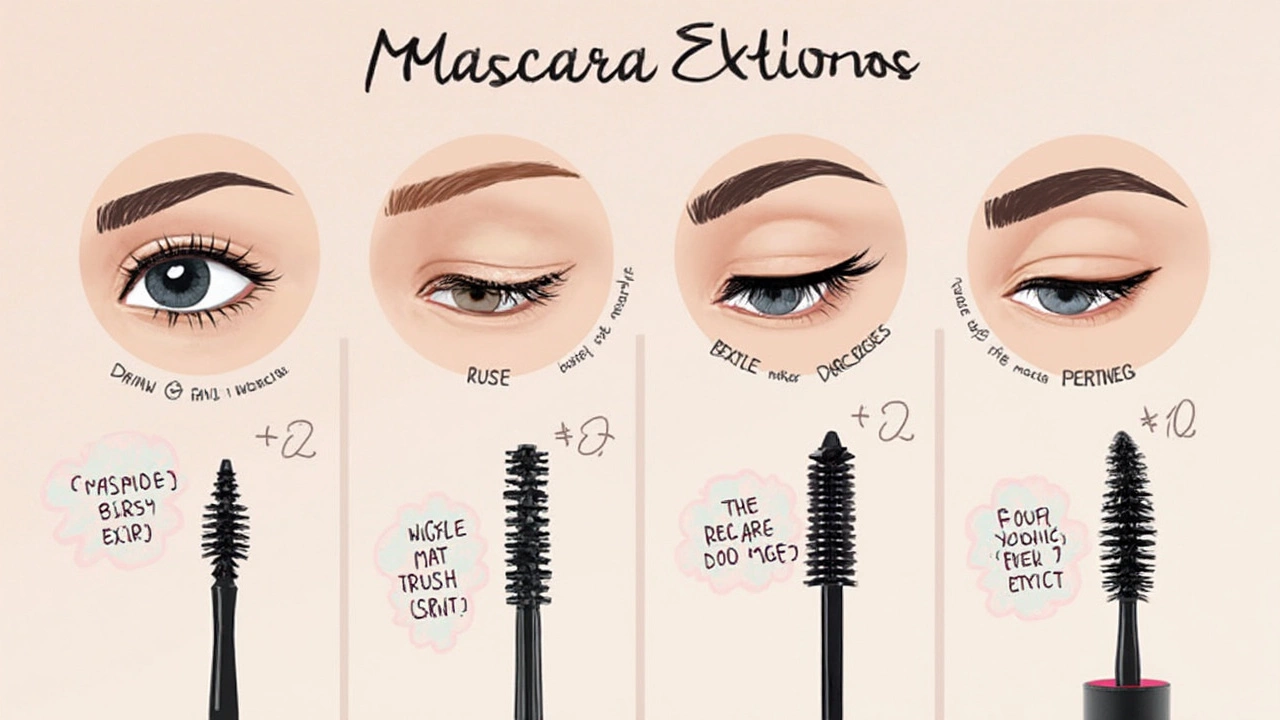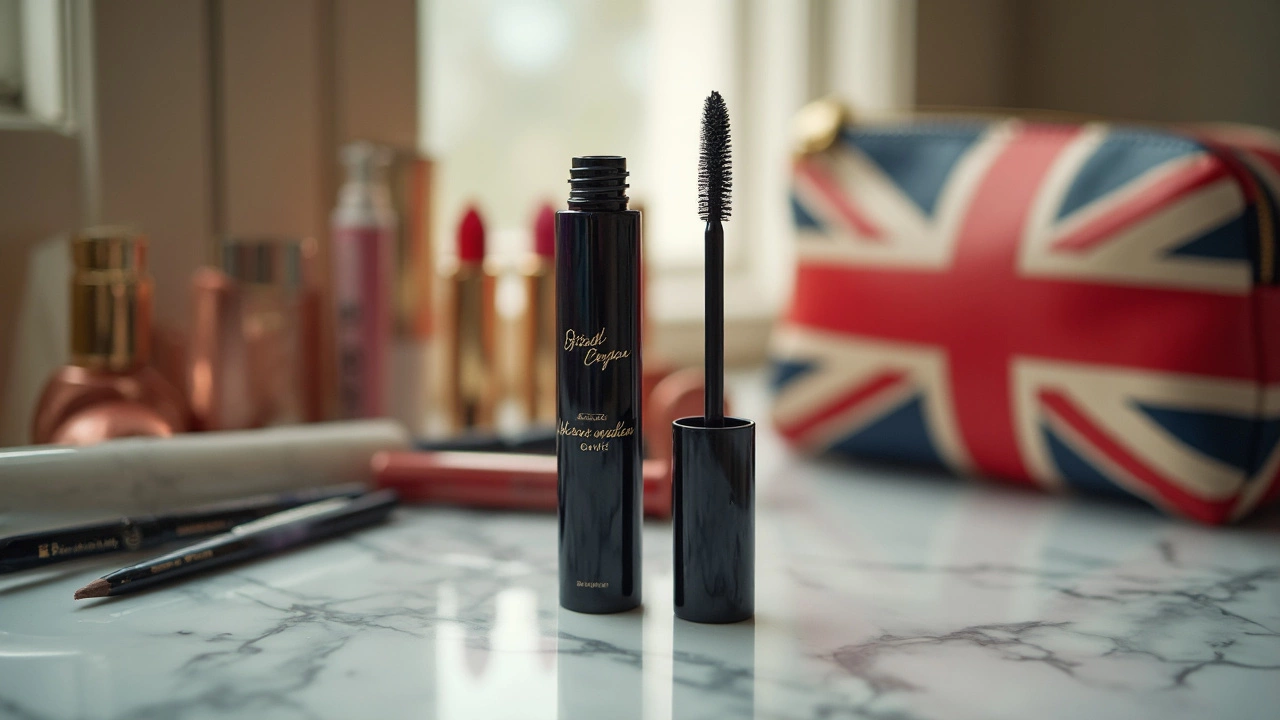Mascara isn’t just a tube of black goop that lives at the bottom of your makeup bag—it’s actually one of the oldest and most loved cosmetic staples out there. If you’re looking to make your eyelashes stand out, even when you’re running late in the morning, mascara is usually the first thing people reach for. But is it technically a cosmetic, or is it just a makeup tool with a fancy name?
Let’s clear it up right away: yes, mascara is absolutely a cosmetic. If you check most definitions, any product used to change or highlight how you look—especially on your face—falls under the cosmetic umbrella. Mascara ticks all the boxes by boosting the length, curl, and darkness of your lashes, making your eyes pop without much effort. And with all the different types out there—waterproof, lengthening, volumizing—you’re not stuck with just one look.
- What Is Mascara, Really?
- Is Mascara Classified as a Cosmetic?
- What Mascara Actually Does
- Popular Types and What’s Inside
- Quick Tips for Using Mascara
What Is Mascara, Really?
At its core, mascara is a tinted substance made to coat your eyelashes, making them look longer, darker, and fuller. You’ll usually find mascara in a small tube with a brush or wand. The point? To make your eyes stand out with just a few swipes. Every drugstore and beauty aisle, from the U.S. to Japan, stocks mascara because it’s so easy and quick to use.
The basic recipe for mascara hasn’t changed much over the years. Most formulas use a mix of water, waxes (like beeswax or carnauba), pigments for color, and some preservatives. You’ll also find extra stuff in some versions like fibers, vitamins, or oils to give your lashes more volume or condition them while you wear it.
Don’t just take my word for it—mascara has serious staying power in beauty history. The first commercial mascaras showed up in the early 1900s, but people have been using mixtures to darken lashes for centuries. Now, there’s a mascara for almost every need and budget. Big names like Maybelline, L'Oréal, and CoverGirl sell millions of tubes every year.
Here’s a look at what’s often inside a tube of mascara:
| Ingredient | What It Does |
|---|---|
| Water | Acts as a base and keeps the mascara flexible |
| Waxes (beeswax, carnauba) | Helps sculpt lashes and lock in shape |
| Pigments (usually black or brown) | Adds color to eyelashes |
| Preservatives | Prevents bacteria growth |
| Film-formers | Creates a smooth coat on each lash |
No matter the brand, the goal is always the same: make your lashes look their best and last through your day. And since mascara is all about your eyes, companies test these products more strictly for eye safety compared to a lot of other cosmetics.
Is Mascara Classified as a Cosmetic?
If you’ve ever wondered where mascara really stands, it’s clear: it’s definitely a cosmetic. The Food and Drug Administration (FDA) calls mascara a cosmetic because it’s used mainly to clean, beautify, or change the look of your lashes. The EU has similar rules, so it’s not just a US thing—it’s basically universal. Anything that enhances or changes your appearance, especially stuff you put on your face or eyelashes, lands in this category. That’s why mascara sits on shelves beside products like lipstick, foundation, and brow pencils.
You’re probably not surprised, but there are real reasons behind this classification. Cosmetics are strictly regulated. That means when you swipe on mascara, there’s a solid set of rules about which ingredients are allowed, how they’re labeled, and what safety testing happens before they end up in your hands. Mascara has to meet the same basic safety standards as your skin creams or blush. Interesting fact: the FDA keeps a close eye on mascara ingredients to make sure they don’t cause eye infections or allergic reactions.
Here’s a quick look at how mascara fits in with other common cosmetics:
| Cosmetic Product | Main Purpose | Main Area Used |
|---|---|---|
| Mascara | Darkens, thickens, and lengthens lashes | Eyelashes |
| Lipstick | Adds color/shine | Lips |
| Foundation | Evens out skin tone | Face |
| Eyeshadow | Adds color to eyelids | Eyelids |
One more thing: if you’re a fan of reading ingredient lists (or just curious), you’ll notice most mascaras have similar stuff—like waxes for thickness, pigment for color, and preservatives for shelf-life. All these ingredients fall under cosmetic regulations too.
So next time you go shopping, remember that mascara isn’t just a makeup extra. It’s officially—and practically—a cosmetic. That means its use, safety, and marketing are taken seriously, just like every other product in your makeup drawer.

What Mascara Actually Does
When people grab a mascara wand, they’re usually after three main things: longer lashes, more volume, and a darker lash line. If you look closely at what mascara offers, you’ll see it’s really about drawing attention to your eyes fast, without a pile of extra products.
Mascara works by coating each lash with a pigmented formula. Most of the time, that means your lashes look instantly thicker and more noticeable. Some mascaras have fibers or special waxes that latch onto each lash, making them stretch and look way longer than they really are. That’s why a few quick swipes can take your lashes from barely-there to full-on drama.
- Mascara contains ingredients that leave a protective film, locking in curl and shape for hours.
- It can darken pale lashes, making your natural eye shape stand out without any other makeup.
- Some formulas add vitamins or conditioning agents like panthenol, so your lashes don’t get brittle after daily use.
Here’s something that surprises a lot of people: waterproof mascara formulas use silicone-based ingredients so your lashes don’t budge, even if you sweat or get caught in the rain (or if your cat Whiskers knocks over your water glass—just saying). Regular mascaras, on the other hand, are usually easier to wash off and may be gentler if your eyes are sensitive.
According to a recent survey by Statista, 69% of makeup users in the US say mascara is the one cosmetic they can't do without. That’s more than any other product.
| Effect | What Happens |
|---|---|
| Lengthening | Lashes look longer, thanks to stretching fibers or polymers |
| Volumizing | Lashes appear much thicker by adding layers and pigment |
| Defining | Every lash gets separated for a no-clump, sharp look |
| Curl-Holding | Lifts and sets the curl if you use a lash curler first |
So, whether you love that barely-there tint or you’re all about big, bold lashes, mascara always works by enhancing what you’ve already got. That’s why it’s stayed so popular—simple, fast results with zero fuss.
Popular Types and What’s Inside
When you hit up the makeup aisle, there’s a crazy number of mascara options. You’ll see everything from waterproof formulas to lengthening and volumizing types, and even clear versions. Each kind does something specific, so you won’t be stuck using the same tube for every occasion.
Here’s a quick look at the most common types out there:
- Mascara: The all-rounder. Usually black or brown, great for everyday use.
- Lengthening Mascara: Adds some serious height to short lashes. You can spot these by their longer, skinny wands.
- Volumizing Mascara: If you want thick, bold lashes, this is your pick. These formulas are often a bit heavier and tack on more product.
- Waterproof Mascara: For humid days or happy-crying at weddings. A little harder to remove, but it won’t smudge.
- Clear Mascara: Barely-there look; also helpful for taming eyebrows.
So, what goes into these little tubes? Most mascaras have the same basic parts:
- Wax: This is usually beeswax, carnauba, or paraffin. It helps coat and lengthen the lashes.
- Oils: Things like mineral oil or eucalyptus oil keep the mascara wet and easy to apply.
- Pigments: Black and brown are super common. Some brands go wild with blue or purple.
- Film formers: These help the product stick to your lashes instead of flaking all over your face.
- Preservatives: Makes sure your mascara doesn’t go bad right away.
Here’s a look at what you might find on the back of a mascara box:
| Main Ingredient | Why It’s Used |
|---|---|
| Beeswax | Helps hold the shape and build volume |
| Iron Oxide Pigments | Adds color—usually black or brown |
| Synthetic Polymers | Helps mascara stick to lashes |
| Preservatives (like parabens) | Keeps the product fresh and bacteria-free |
| Oils (mineral, lanolin, or castor oil) | Lets mascara glide on smoothly |
Want advice from the pros? According to the American Academy of Ophthalmology,
"Choosing a mascara depends on both your lash type and whether you need it to withstand water, sweat, or tears."So next time, think about what you need most—length, volume, or staying power—before you buy your next tube.

Quick Tips for Using Mascara
Getting your mascara just right isn’t rocket science, but a few smart moves can make a huge difference. The goal? Max out your lashes, cut down on clumps, and make your mascara last all day. Check out these tried-and-true tips from everyday beauty lovers and pro makeup artists:
- mascara works best on clean, dry lashes. If you’ve got leftover makeup or oil, wipe your lashes with a cotton pad before you start.
- For extra lift, curl your lashes with a gentle eyelash curler before applying anything. Hold the curler at your lash roots for 5 seconds.
- Don’t pump the wand in and out of the tube—this pushes air in and dries out your mascara, making it clumpy fast.
- Start at the base of your lashes and wiggle the wand as you move up. This coats every lash without sticking them together.
- Try applying one coat, let it dry about 10-20 seconds, then add another if you want more drama. Too many layers at once can lead to flakes.
- Wipe any excess mascara off the wand with a tissue before you start to avoid big blobby globs on your lashes.
- If you get smudges on your lid or under your eyes, wait for them to dry, then gently flake them off with a cotton swab. No need to start over!
- Check the expiration date—most mascara tubes last 3 to 6 months after opening, max. Using old mascara is how you end up with irritated eyes or a weird smell.
Ever wondered why keeping mascara fresh is a big deal? Here are the essentials at a glance:
| Mascara Fact | What to Know |
|---|---|
| Average shelf life (opened) | 3-6 months |
| Instances of eye infection from old mascara (per year, U.S.) | Approx. 2,700 cases |
| Main reason for clumping | Dry formula or too many layers |
Bottom line: treat your lashes to fresh, well-applied mascara and they’ll look fuller and healthier. And yes, if you spot your cat eyeing up your mascara wand (mine does it all the time), just keep it out of paw’s reach—no one needs black streaks on the sofa cushions.

